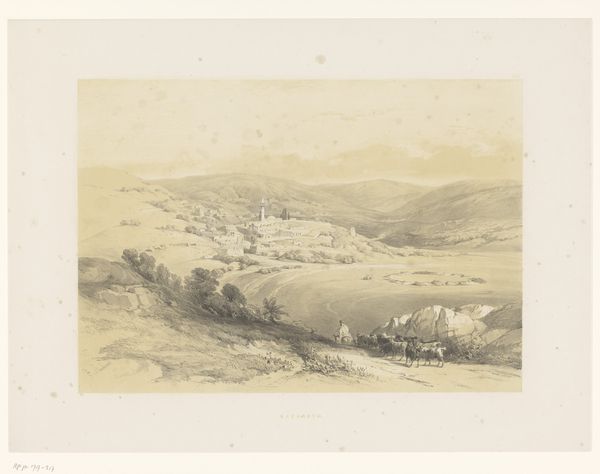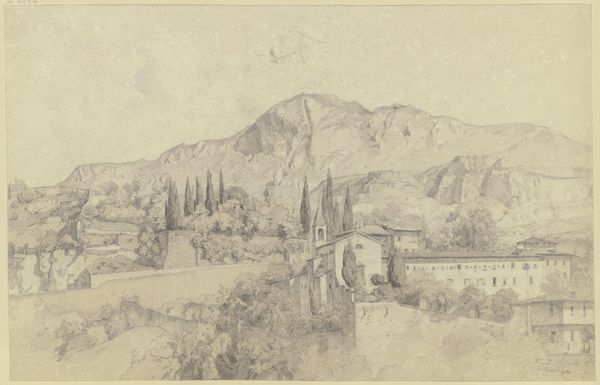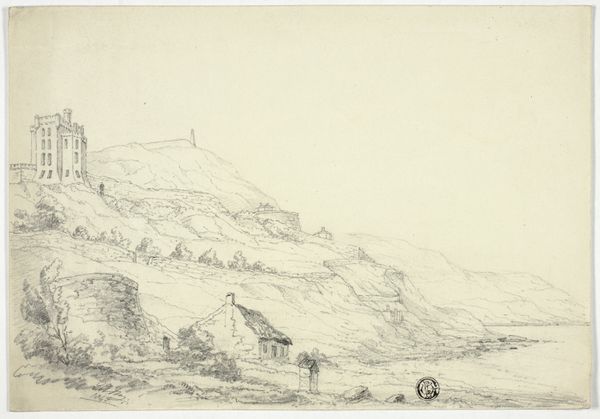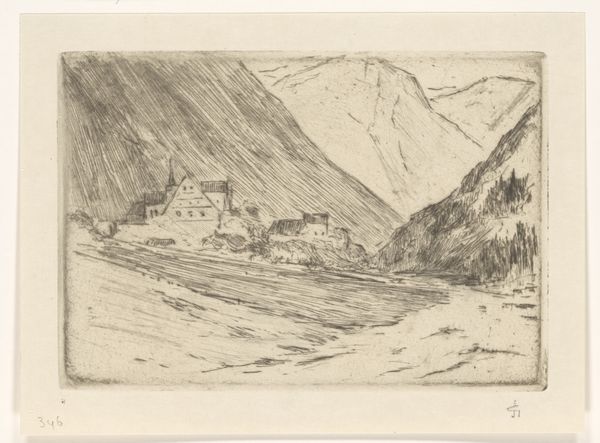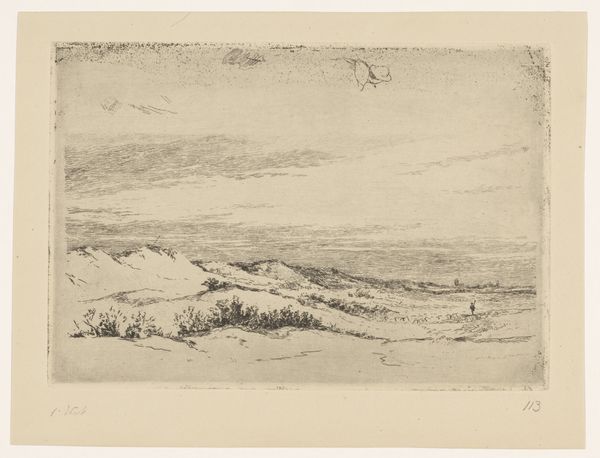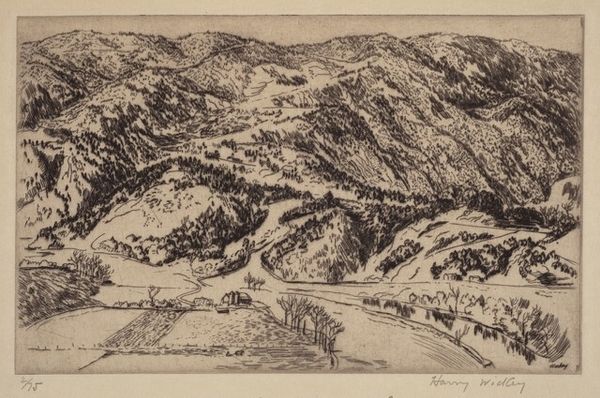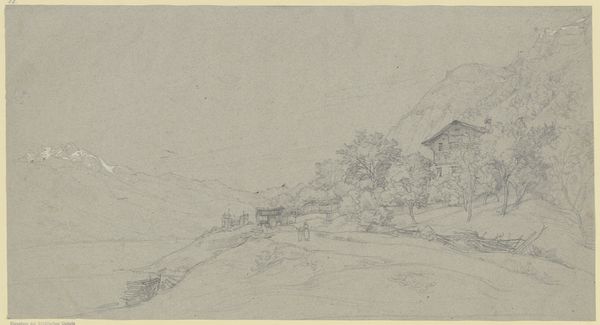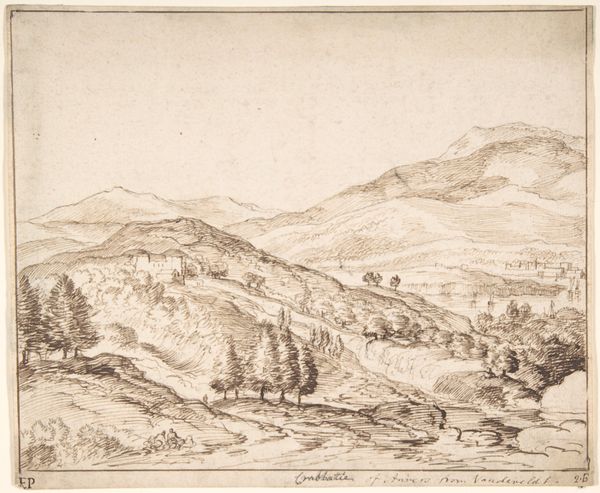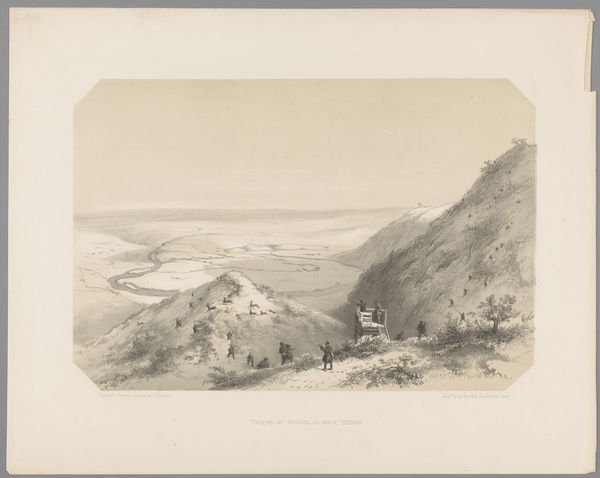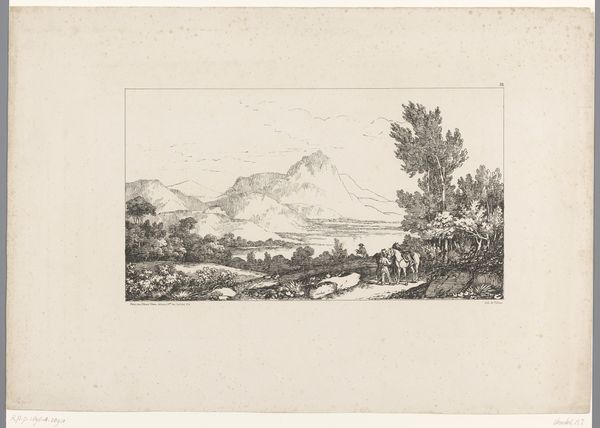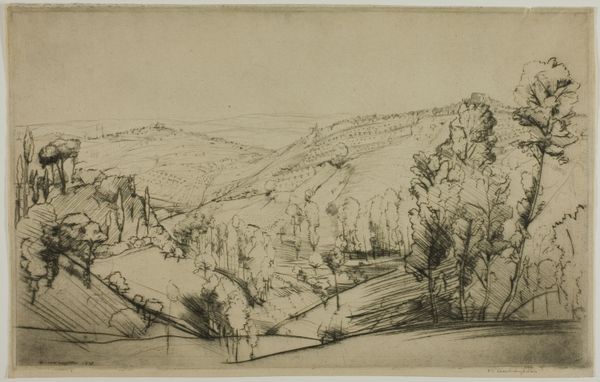
Dimensions: height 176 mm, width 252 mm
Copyright: Rijks Museum: Open Domain
Editor: This is Ernest Haskell’s "Wildcat Canyon," dated between 1886 and 1925. It’s an etching, a pencil sketch really. The scene is delicate, almost ephemeral. What aspects of its materiality and production processes strike you most? Curator: I'm interested in the relationship between labor and landscape presented in "Wildcat Canyon." Think about the physicality involved in etching – the repetitive, demanding process of carving into the metal plate, in contrast with the image itself depicting nature. Doesn’t that give you pause? Editor: I see what you mean. There’s this tension between the manufactured aspect of the etching and the seemingly untouched scene. How would that affect an audience’s perception at the time? Curator: That's a key question. This tension reflects broader societal anxieties regarding industrialization's encroachment upon the natural world, doesn't it? This landscape is consumed, made a commodity. Even Haskell's choice of medium—etching—implicates him, and by extension the art consumer, in the same cycles of production and consumption. Consider the social context: What kind of market existed for these kinds of prints, and who were the people consuming them? Editor: I imagine this would have appealed to a growing middle class seeking affordable art. Curator: Exactly! Etchings allowed for wider distribution, democratizing art ownership but also potentially diluting its value as a unique object. Does the etching medium amplify or diminish the emotional impact for the viewer? Editor: I hadn't really thought about that. I suppose seeing it as a manufactured object changes my understanding of Haskell’s intentions… or maybe challenges the idea of pure artistic intentions altogether. Curator: Precisely. This challenges the traditional boundary between fine art and craft. Thinking about the materials and processes of production encourages a more nuanced understanding of the work, beyond purely aesthetic considerations. Editor: This way of analyzing art through its making has opened my eyes to the social and economic layers within it. Curator: Absolutely! Examining these elements helps reveal the complex relationship between art, labor, and consumerism in that historical period.
Comments
No comments
Be the first to comment and join the conversation on the ultimate creative platform.
